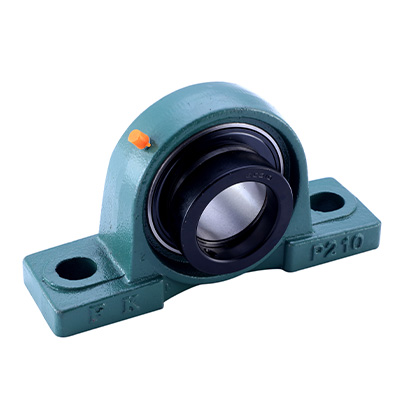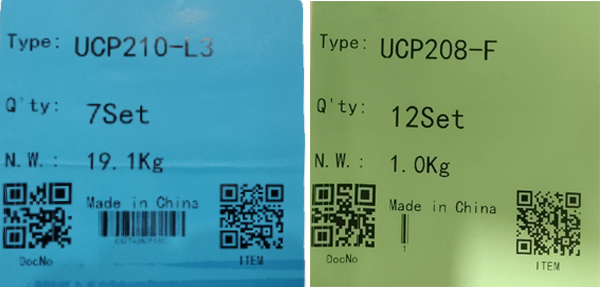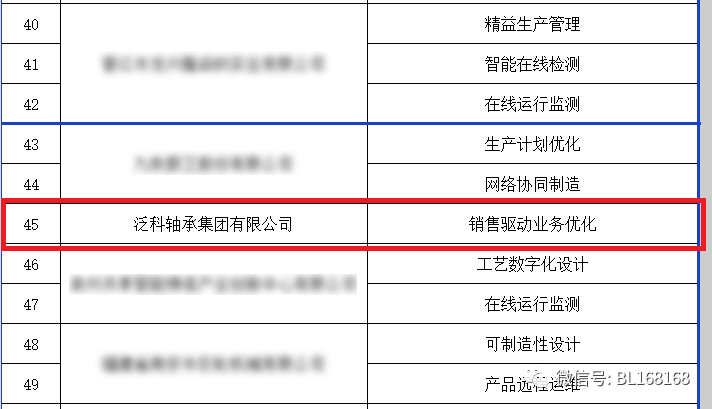Recently the usage of thermoplastic materials has been increasing steadily as they provide a unique collection of properties. Strength-to-weight ratios, environmental resistance, rapid processing, superior high-temperature performances, and recyclability are some of thermoplastics’ advantages that favor their use over other materials. The addition of fibers is widely used in reinforcing polymeric-based composites to be more reliable in their applications. In order to use fiber-reinforced polymers (FRPs) as a structural element, these materials have to fulfill some requirements such as stiffness, strength, durability, impact and crush to be more useful in the manufacturing and assembly of critical components. Various automobile parts have been produced using fiber-reinforced thermoplastics, as their lightweight effects have been demonstrated by non-load bearing and semi-load bearing parts. These parts include battery boxes, crash boxes, lightweight wheels, front-end modules, automotive seats, leaf springs, and hoods. In particular, GFR/PP appears to have a good potential for application in the building of prefabricated structures such as houses, barriers, beams, and bridge decks in the field of civil engineering. Vaidya and Chawla designed and fabricated a durable bus seat made of GFR/PP providing 43% and 18% savings, respectively, in weight and total production cost compared to commonly used seat designs.
The joints represent one of these critical components where bolts provide the primary means of connecting FRPs in the structural application, construction of aircraft, aerospace, automotive vehicles, and other engineering applications with high performances including sporting goods, wind energy structures, and medical appliances. The joint strength of GFR/PP was found to be suitable for the design of the leaf spring and hence these types of materials can be utilized for joint applications. Also, Anandakumar et al. obtained a superior performance from GFR/PP control arm, as a load-bearing component of the suspension system, in comparison to steel. The joint design has a particular interest in FRPs structures since joints represent the weakest point in a composite structure and the composite material capability of redistributing local high stresses through yielding. BS is an important property that must be taken into consideration in joint design.
The holes needed for joining FRPs are usually manufactured by the drilling process which weakens the reinforcement structure. Nejhad and Chou explained that drilled holes significantly reduced the performance of Carbon fiber/epoxy composite due to a through-the-thickness cut of fibers which can be averted by using molded-in holes. Nejhad and Chou considered that for all practical purposes, a molded-in hole is more desirable than a drilled hole. Therefore, many alternative hole molding techniques were developed. Hufenbach et al.used a technique based on fiber shifting which enables non-destructive manufacturing of the holes. Brookstein and Tsiang found that integrally-formed braided holes provide a 180% increase in joint BS compared with machined holes in the graphite fibers/epoxy composite. Chang et al. showed in a study of mechanical joining by pin load of Kevlar/epoxy, Graphite/epoxy, and Kevlar-Graphite/epoxy hybrid composites that specimens with molded-in holes gave 0.12–61.23% strength enhancement compared with drilled hole specimens.
Experimental results of Lin et al. showed that there exists larger failure strength, smaller initial stiffness, and larger failure strain of woven glass roving composite (0,90)s with a molded-in hole relative to those with a drilled hole. However, for (45, − 45)s there is no improvement for failure strength and initial stiffness except for failure strain. Zitoune et al. observed that molded-in holes of woven carbon fibers/epoxy composite exhibit 30% higher strength and 100% lower strain than drilled holes. Brown et al. showed that for advanced manufacturing of carbon fiber/PEEK thermoplastic composites, better open-hole tensile and compressive properties were obtained when holes were produced by thermally assisted piercing technique as compared with drilled holes. Fujita et al. found that for the braided glass fiber reinforced epoxy composite (GFRE), the joint strength of the braided hole was greater than that of the machined hole. Also, Herszberg et al. found that weft-knitted and woven glass fiber/epoxy composites with integrally formed holes had a BS about 20% greater than those with drilled holes. Durante and Langella found a high BS of the GFRE composite specimens with the molded-in hole, made by shifting the fibers around the hole, compared to the BS of the specimens with holes made by cutting the fibers by drilling. Dickson and Dowling found that the BS of 3D printed Carbon fiber/Nylon composite with a drilled hole is lower than that of the ‘Tailor Woven’ integrated hole by 63% if it goes under double shear testing. Clark concluded that the average increases in bearing stress and bearing strain at failure of cut carbon fibers/Nylon composites for the printed-in holes (allowing for fiber orientation circumferentially around the hole) compared with the drilled-in holes were 31% and 86.8%, respectively.
On contrary, Ataş et al. concluded that the BS of the Tri-axial braided carbon fiber/epoxy specimens with a molded-in hole was reduced than specimens with drilled holes, due to the increased misalignments of the fibers during the manufacturing process. Wang’s comparison between holes produced by tri-axial braided glass roving/epoxy specimens and machined holes indicated that the braided hole showed similar or even lower bearing capacity compared with the machined hole.
For machined holes, the BS of FRPs with drilled holes was mainly affected by the machining conditions. Khashaba et al. found that specimen stiffness and BS of GFRE decreased as the feed rate and cutting speed increased. Khashaba and El-Keran observed a lower BS of woven GFRE composites that were drilled at a speed of 16.3 m/min compared with drilling at 32.7 m/min while feed values had an insignificant effect on BS at speed of 16.3 m/min but it had a clear effect at 32.7 m/min (increased then decreased). Krishnaraj et al. illustrated that drilling at a rotational speed of 3000 rpm and a feed rate of 0.02 mm/rev led to the highest BS compared to other spindle speeds and feeds. Tagliaferri et al. concluded that for a given drilling speed to feed rate ratio, better results in terms of BS may be obtained by adopting a lower drilling speed for GFRE specimens. Srinivasa Rao et al. found that small feed rates are preferred in the drilling of woven GFRE composite laminates. Wang et al. indicated that both rotational speed and feed when drilling GFRE laminates had an insignificant effect on the BS.
Studies dealing with the drilling of thermoplastic matrix composites cover some aspects where Ilio et al. discussed the damage caused by drilling in unidirectional composites made with thermoplastic matrix reinforced with graphite fibers concerning different machining parameters. Hocheng and Puw demonstrated that the carbon-fiber-reinforced Acrylonitrile Butadiene Styrene (ABS) composites had good machinability in drilling compared with epoxy-based composites. Mudhukrishnan et al. discussed the effect of drill material, spindle speed, and feed rate on delamination and thrust force on woven glass fabric reinforced polypropylene laminates.
Manufacturing parts with readymade holes requiring no further processing distinguishes injection molding from other manufacturing techniques. Injection molding can flexibly provide thermoplastic constructions reinforced with short fibers as an enhancement for strength including joint strength. However, there are limits to joint strength enhancement through increasing shot fiber content. Despite reinforcing injection molded parts with continuous fibers is not possible, holes could be reinforced using embedded local continuous fibers. Moreover, an allowance of improving joint performance by metallic insert is possible through injection molding, where direct adhesion between the plastic and the metal could be secured.
From the previous literatures it has been clear, according to our knowledge, that limited research works are concerned with studying the effect of weight fraction on the BS of injection-molded chopped glass fiber reinforced thermoplastic composites. Also, rare studies were carried out in the comparison between the BSs of molded-in holes and drilled holes of this type of material. Moreover, there is no systematic study carried out to indicate the effect of machining conditions on the BS for such type of materials. Accordingly, the present work aims to study the effect of change in weight fraction of glass fiber on the BS of injection-molded chopped glass fiber reinforced thermoplastic (PP) composites. An investigation was made to compare between the BS of molded-in and drilled holes of these type of composites. Moreover, the influence of drilling parameters (feed rate, spindle speeds) on BS of specimens with machined holes was studied.
(https://www.nature.com)
More About FK:
FK Bearing Group Co.,Ltd. was orignally founded in 1969 and always focuses on Bearing Units in the past 50 years. FK has complete industrial chain automatic factory of its own, now FK is one of the biggest bearing parts factories in China with annal production and sales up to 18 million pieces.
2022 New Week Hot Products Recommended:
As one of the leading bearing units manufacturers and suppliers in China for more than 50 years, we warmly welcome you to buy top quality bearing units from FK Group. For dimensions and specifications, contact us now.
https://www.fk-bearing.com/products/Bearing-Units-/534.html

More Products please do not hesitate to view here:
https://www.fk-bearing.com/products/catalogue.html
For dimensions and specifications, contact us now.
TEL: 86-595-86396027
FAX: 86-595-86382510
E-mail: export@fk-bearing.com
Website: www.fk-bearing.com
Mobile: m.fk-bearing.com



 Englanti
Englanti Espanja
Espanja Ranskan kieli
Ranskan kieli Saksan kieli
Saksan kieli Portugali
Portugali Italia
Italia Korealainen
Korealainen japanilainen
japanilainen vietnam
vietnam turkki
turkki arabialainen
arabialainen Venäjän kieli
Venäjän kieli czech
czech thaimaalainen
thaimaalainen irlantilainen
irlantilainen bulgarialainen
bulgarialainen Puola
Puola kroaatti
kroaatti ukrainalainen
ukrainalainen Bosnia
Bosnia liettualainen
liettualainen Latvialainen
Latvialainen romanialainen
romanialainen kreikkalainen
kreikkalainen Tanskan kieli
Tanskan kieli Unkari
Unkari Norjan kieli
Norjan kieli Suomalainen
Suomalainen Hollannin kieli
Hollannin kieli Ruotsin kieli
Ruotsin kieli Slovakian
Slovakian slovenian
slovenian indonesialainen
indonesialainen Bengali
Bengali serbialainen
serbialainen uzbekki
uzbekki




